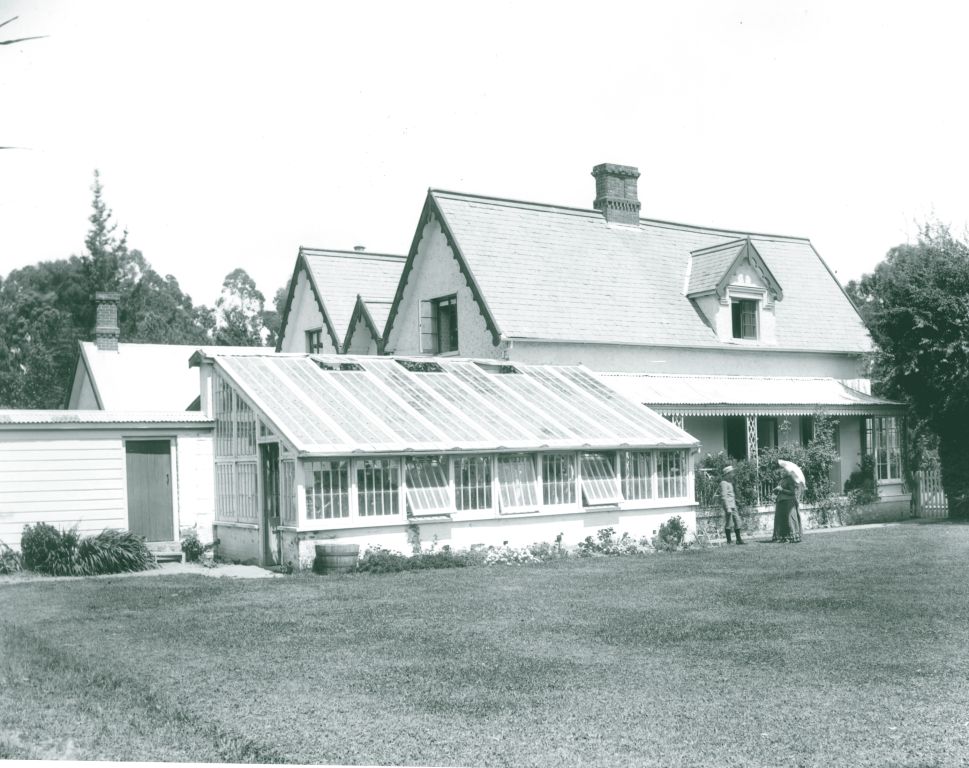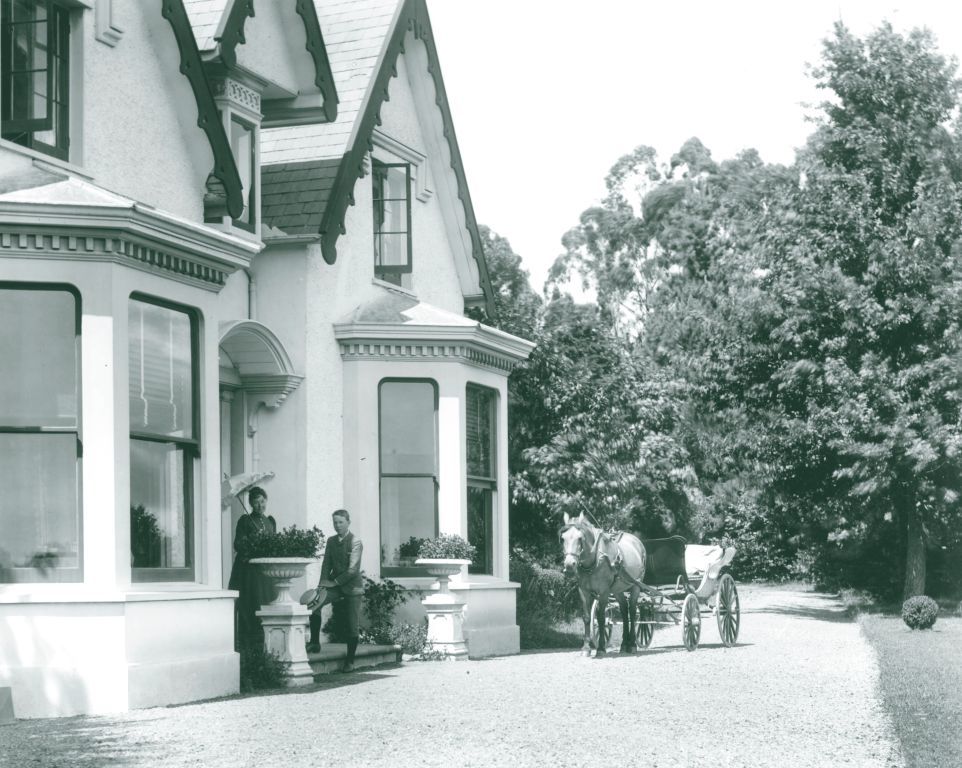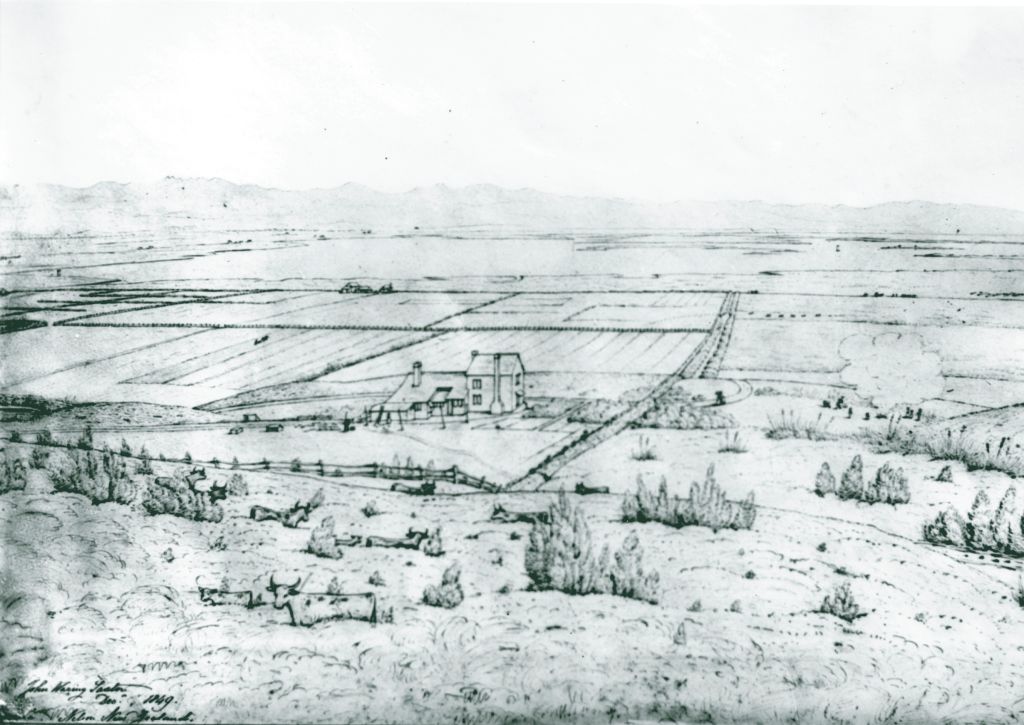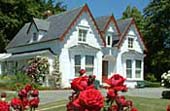Broadgreen House
English settler Edmund Buxton, with his wife and family of six daughters, commissioned architect William Beatson and builder Mr Holland to create their home. It was completed about 1855, the centrepiece of 100 acres of farmland.
English settler Edmund Buxton, with his wife and family of six daughters, commissioned architect William Beatson and builder Mr Holland to create their home. It was completed about 1855, the centrepiece of 100 acres of farmland. Today it is an excellent example of colonial cob construction and is the largest house of this type to be open to the public. Inside, you can see a cut-away wall section which shows the rammed earth technique of building with roughcast to protect the outside and plaster to smooth the interior walls.
At about the time the house was built, Edmund Buxton founded the Nelson business E Buxton & Company Merchants, sited in Trafalgar Street. Each morning he was driven to work in his buggy and pair. It appears however that his great interest was the farm and garden. It was Edmund who planted many of the old trees that remain in the gardens today. He also loved his pigs, which could explain the planting of oaks for acorn fodder.
The second owners of Broadgreen House were Fred and Mary Langbein, who purchased the property in 1901. The Langbein family of six sons and two daughters kept the house alive as a family home, Fred established an orchard on about 30 acres of the property, and gardening was enjoyed.
A prominent water tank stood in the kitchen yard for many years, as did a nearby windmill. Apart from replacing some of the floors and converting an upstairs bedroom to a bathroom, no major changes were made to the house by the Langbeins.
In 1965 Broadgreen House was purchased by the Nelson City Council. In its 110 year history as a family home it had only two owners.
The house
The eleven rooms are furnished to represent a family home of the late 1800s. Among many fascinating items you may discover:
- the oldest known quilt in New Zealand
- 1880s French wallpaper
- child's chair made from teak of the wrecked Fifeshire
- early kauri sideboard made by a Nelson cabinet maker
- 1840s piano
- 1760s oak longcase clock
- mid 1800s kauri cot
- patchwork, costumes and textiles
- original Brussels carpets
The Grounds - From paddock to public garden
"Gently-sloping fields to the sea" was the way Stoke would have been described in 1855 when Broadgreen House was built. The Buxton family established a garden around their house which included oaks, beeches and walnuts; some remain today.
By the time the second owners, the Langbein family, took over in 1901 about half of the original 100 acres had been sold. The Langbeins planted most of their land in orchard and kept a few acres as farm and home garden. The old fruit trees in the garden today were planted by Fred Langbein after 1901. The trees planted by Langbein include chestnuts, walnuts, holly, rhododendrons, camelias, and osmathus. Apparently he brought back many of the specimens from his travels. Two worth searching out are the camphor and loquat. Many of the older trees were damaged or destroyed in storms in 1975 and 2008.
The land was eventually sub-divided for housing in 1965, when the property was sold to the third and current owners, the Nelson City Council.
Features of the garden:
- Samuels Rose Garden
Mr S. J. Samuels was the nurseryman who helped establish this garden for the City of Nelson. He donated both the rose stock and budwood, and undertook the budding, assisted by his wife Rima. "Rima" is one of the roses developed by Mr Samuels and is on display in the garden. The garden was opened in 1968. New cultivars are regularly added to the collection which numbers about 650 varieties. A booklet to help you identify and locate the roses is available at the Broadgreen Centre. - Adeline's Cottage (not open to public) - at the entrance gate to the estate
Adeline, second daughter of Edmund and Martha Buxton, married gardener Thomas Chisnall, apparently against Edmund's wishes. It is probable that Edmund relented and allowed the couple to live in the cottage, but whatever the story, the cottage predates the marriage and was not actually built for Adeline. - Sands Garden - Stillbirth and Newborn Death Support Group
SANDS is a support group for families. An area of Broadgreen has been set aside as a place of healing and acknowledgement for the loss of a baby before, during and after pregnancy.
This text was written for a Nelson Heritage Panel, commissioned by Nelson City Council, 2008
Updated 2021
Story by: Janet Bathgate
Further Sources
Books
- Broadgreen House, 1855-2005: Nelson heritage at its best (2005) Nelson, N.Z.The Broadgreen Society [held Nelson Public Libraries]
- Broadgreen, Nelson :brief notes on the setting, fabric & history of the building.(196?) Nelson, N.Z.: R.W. Stiles &Co.
http://www.worldcat.org/oclc/155838476 - Horrocks, S. (1984) Historic Nelson. Nelson [N.Z.] :S. Horrocks and B. de Butts
http://www.worldcat.org/oclc/45791554 - Le Cren, H. (1997) Broadgreen House. Nelson, N.Z.: Broadgreen Committee of the Nelson City Council
http://www.worldcat.org/oclc/154242391 - Salmond, J. (1986) Old New Zealand Houses 1800-1940, Auckland: Reed Methuen
http://www.worldcat.org/oclc/17929169 - Vine, C. (1987) Broadgreen House Nelson, N.Z.: Broadgreen Committee of the Nelson City Council
http://www.worldcat.org/oclc/153072795 - Trapeznik, A. (ed.) (2000) Common Ground? Heritage and Public Places in New Zealand. Dunedin, N.Z: University of Otago Press
http://www.worldcat.org/oclc/45682308
Newspapers
- Broadgreen Bulletin (2001-). Nelson, N.Z.: Broadgreen Society[held Nelson Public Libraries]
Websites
- Broadgreen House. Retrieved 10 November 2010 from Nelson City Council
http://www.nelsoncitycouncil.co.nz/broadgreen-historic-house - Broadgreen. Retrieved from New Zealand Historic Places Trust Register:
https://www.heritage.org.nz/the-list/details/252 - Nelson Virtual Heritage Festival 2020: Broadgreen House historic textile collection:
https://www.youtube.com/watch?v=s_ZwATre64U - Northcote Bade, S. (1958) Early housing in New Zealand, with particular reference to Nelson and Cook Strait area. Nelson Historical Society Journal, 1(3)
http://www.nzetc.org/tm/scholarly/tei-NHSJ01_03-t1-body1-d1.html



